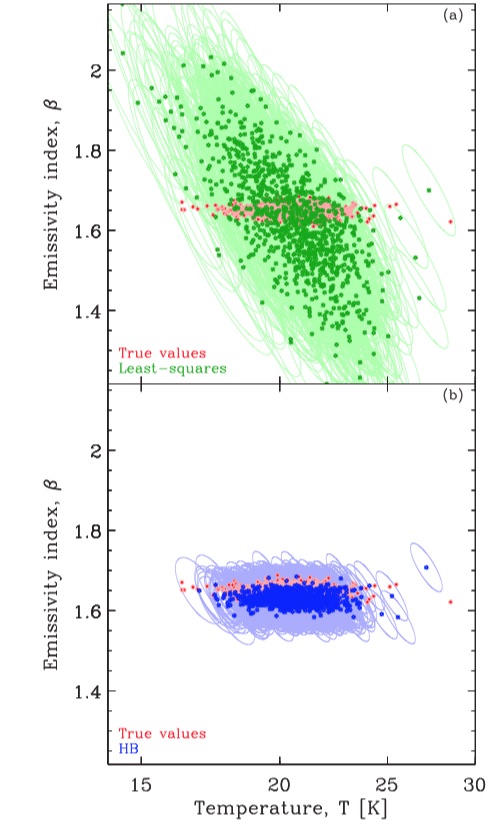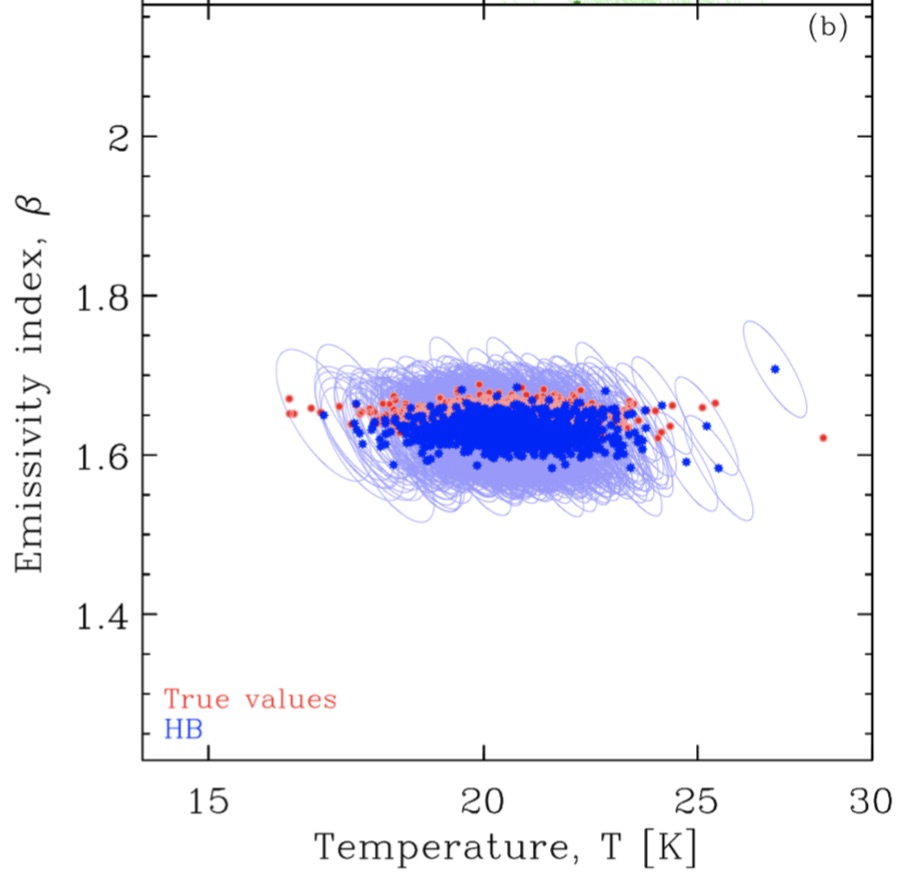This article presents a new dust spectral energy distribution (SED) model, named HerBIE, aimed at eliminating the noise-induced correlations and large scatter obtained when performing least-squares fits. The originality of this code is to apply the hierarchical Bayesian approach to full dust models, including realistic optical properties, stochastic heating, and the mixing of physical conditions in the observed regions. We test the performances of our model by applying it to synthetic observations. We explore the impact on the recovered parameters of several effects: signal-to-noise ratio, SED shape, sample size, the presence of intrinsic correlations, the wavelength coverage, and the use of different SED model components. We show that this method is very efficient: the recovered parameters are consistently distributed around their true values. We do not find any clear bias, even for the most degenerate parameters, or with extreme signal-to-noise ratios.
Galliano, Frédéric
2018, Monthly Notices of the Royal Astronomical Society, 476, 1445
http://adsabs.harvard.edu/abs/2018MNRAS.476.1445G

